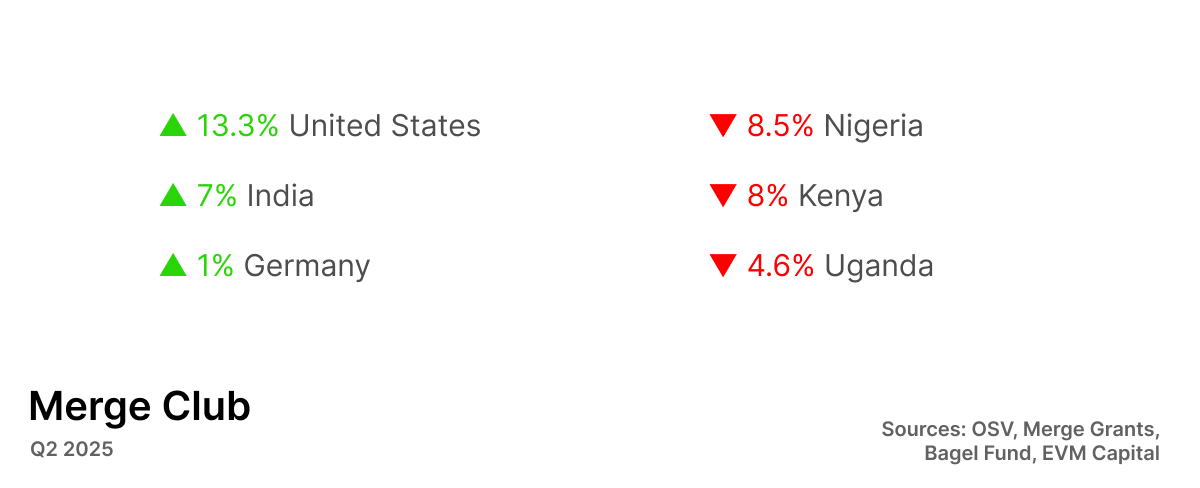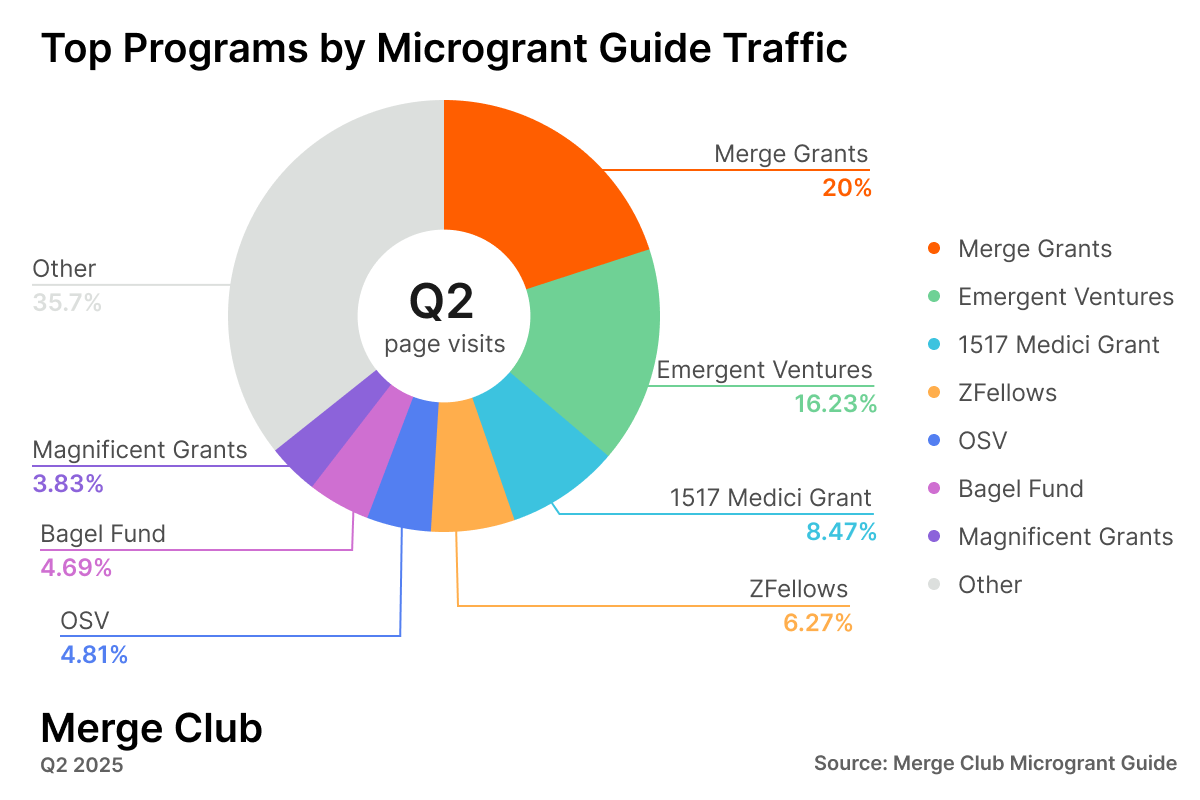State of Microgrants / Q2 2025
Trends and Data From The Microgrant Space
Three months ago, when we published our first State of Microgrants report, we described how the microgrant space was barely a space at all when we started Merge. We noted that, while VCs and accelerator programs were multiplying rapidly, the number of new non-dilutive funding options remained relatively stagnant.
This quarter tells a different story. After crunching the numbers, we're happy to report strong growth across the board — both in program creation and application volume.
The State of Microgrants open-sources data from Merge Grants and the wider microgrant space with participation from OSV, EVM Capital, Bagel Fund, the Microgrant Guide, and Merge’s community. If you’d like to contribute your program’s anonymized data to the State of Microgrants, email us!
Microgrants Around The Globe
While the U.S. remains #1 in applicant volume, it’s impressive to see how strongly emerging markets like India and Nigeria are following. Also worth noting — Canada dropped to 5th, from 3rd place last quarter.
The geographic trends show a complete reversal from Q1. While we saw significant growth in emerging markets like Nigeria, Kenya and Uganda then, this quarter the usual suspects (U.S. and India) have reclaimed their dominance with substantial growth.
Programs Today
Our Microgrant Guide has become the definitive place on the internet to discover and apply to Microgrant and Fellowship Programs. We keep standards high for programs on the guide, making sure they’re active, reputable, and 100% no-strings-attached. Currently, we highlight 39 programs that fit these criteria.
This past quarter, we’ve seen 25% growth in programs — a 158% increase in growth rate compared to Q1.
The largest shifts this quarter are in the larger check categories. Several programs with fixed $100k fellowship-style models either discontinued or pivoted to a two-tier system: smaller $1k-$10k checks alongside the original $100k grants.
Microgrant recipients
Grantee demographics vary heavily from program to program. This quarter, we added EVM Capital’s data into the mix and saw mirrored trends across Merge Grants and Bagel Fund. The average applicant age crept up from 17 to 18 and MedTech/BioTech replaced Hardware/Robotics as the Top Granted Sector.
The vast majority of MedTech/BioTech projects utilize both hardware and software to bring their solutions to life. Pure Hardware/Robotics remains strong in second place, showing the continued focus on physical computing and automation. This ranking will likely continue to evolve as we incorporate data from more programs, each with their own focus areas. Read our Q1 Merge Grants update to see more in-depth statistics on our grantees and applicants specifically.
From Merge Grantees creating translation models that go neck and neck with Google and Meta’s to Emergent Ventures grantees discovering ancient civilizations in rainforests, Microgrant recipients continue to work on some of the most exciting emerging companies and technologies. We look forward to supporting more and more builders in getting access to funds that give them the early belief and funding they need to get started.
If you run a program, please consider contributing anonymized data to better our understanding of the State of Microgrants. Email us if you’d be interested in contributing.
A big thank you to OSV, EVM Capital and Bagel Fund for contributing their data to this report alongside our own Merge Grants program.
If you’re looking for grants, check out our Microgrant Guide. Find conversations with grant recipients, program reviews, and more on our YouTube. See for yourself what grantees in our community are building in our Grantee Directory.








